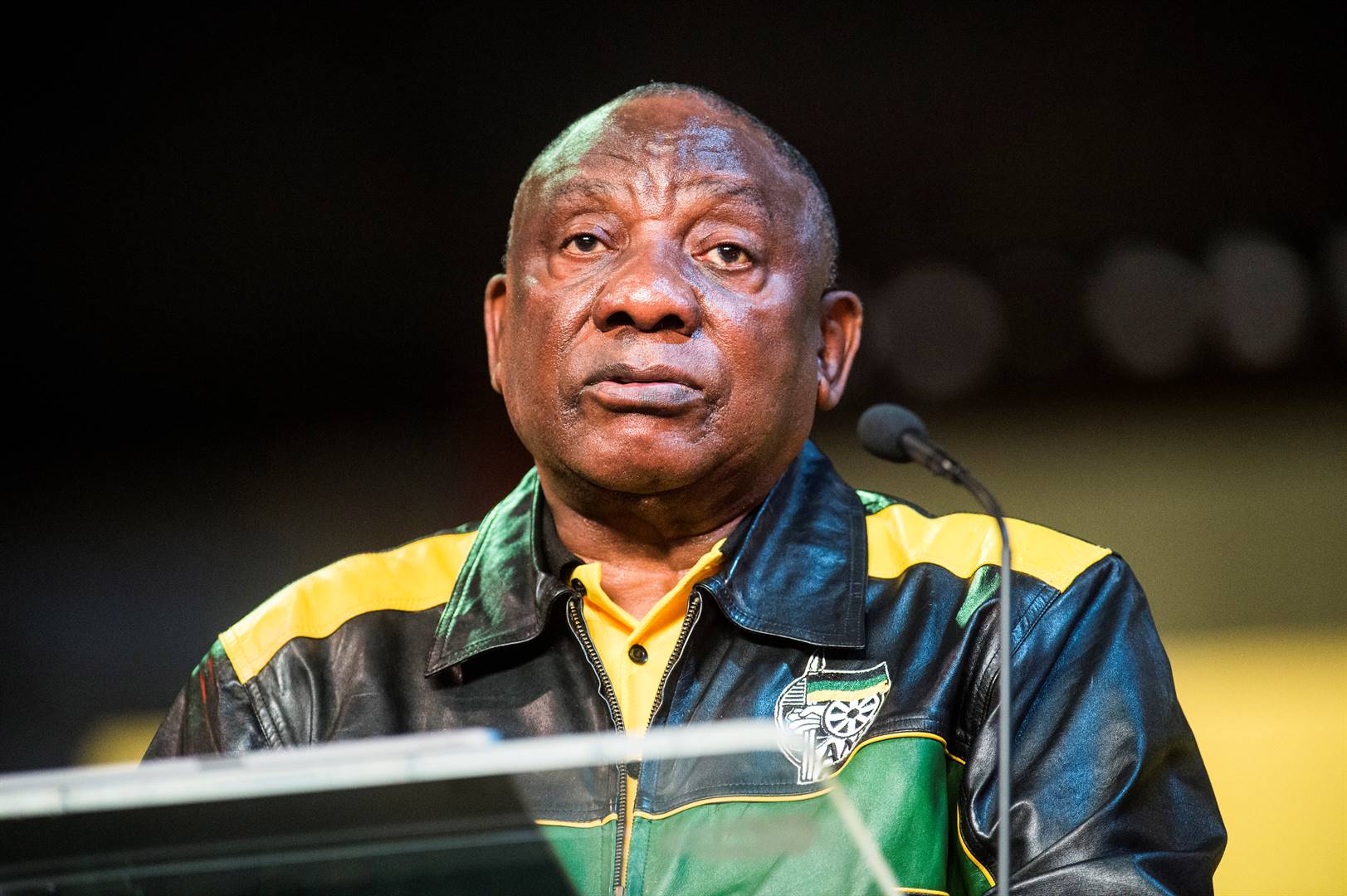How a Zimbabwe Tycoon made a fortune from a Trafigura partnership and spiralling national debt
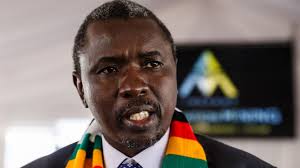
Kudakwashe Tagwirei Zimbabwe business tycoon
Kudakwashe Tagwirei, who is close to Zimbabwe’s president and his inner circle, leveraged his privileged access to fuel and mining markets to strike a lucrative partnership with commodities giant Trafigura. Sanctioned by the U.S. and U.K. for corruption, Tagwirei continued to do business by relocating his network to Mauritius.
Key Findings
- Tagwirei has earned at least $100 million in fees from a partnership with Swiss-based Trafigura. Together, they have profited extensively by dominating Zimbabwe’s fuel market since 2013.
- Trafigura quietly extended $1 billion in loans to the Zimbabwean government, at exorbitant interest rates.
- As controversy grew, Tagwirei moved his business network offshore to Mauritius, where he secured a new near-monopoly fuel deal with the government. He is still active in mining and fuel deals in Zimbabwe.
- Government officials appear on key company records and Tagwirei’s own correspondence, indicating that there might be more powerful people behind the network
When Zimbabwe’s long-ruling strongman Robert Mugabe was forced to resign in 2017, his downfall was greeted by jubilant crowds hopeful that decades of misrule and corruption were finally coming to an end.
His successor, Emmerson Mnangagwa, set off on an international tour to declare Zimbabwe “open for business.” Sporting a scarf knitted in the five colors of the country’s flag, he assured world leaders that all that was needed to jumpstart Zimbabwe’s moribund economy was new leadership and an infusion of foreign investment.Credit: ITAR-TASS News Agency/Alamy Live NewsEmmerson Mnangagwa in Moscow in 2019.
Four years on, Mnangagwa’s promised “New Dawn” has not arrived. Instead, Zimbabwe’s economy remains in tatters. Public debt — much of it illegally accrued — has ballooned, a lack of foreign currency and fuel shortages continue to cripple the economy, and the value of Zimbabwe’s local currency has plummeted.
The turmoil has not been without its winners, though. One man in particular has prospered from the state’s largesse: Kudakwashe Tagwirei, a tycoon known locally as “Queen Bee” because of his vast economic influence.
Under Mnangagwa’s reign, the businessman came to dominate Zimbabwe’s fuel, platinum, and gold sectors. Benefitting from opaquely awarded government contracts worth billions of dollars and preferential access to minerals as well as scarce foreign currency, Tagwirei’s network also got huge state loans he used to enrich himself while indebting the Zimbabwean public.
Those came from a surprising source that proved a key player in Tagiwirei’s network: Zimbabwe’s central bank. At least $3 billion in treasury bills issued by the Reserve Bank of Zimbabwe — which may have had no legal authority to do so — were awarded to Tagwirei’s group between 2017 and 2019, a parliamentary report said, with the group then funneling the windfall into a massive expansion that included a mining acquisition spree at bargain bin prices. As the country’s currency crashed, Tagwirei’s fortunes soared.
But it’s not clear if Tagwirei is the sole, or even the main beneficiary of this largesse. The presence of a handful of state officials in some of the network structures imply he is also a proxy for others. Since 2019 the Reserve Bank of Zimbabwe’s governor, John Mangudya, was even named in Tagwirei-connected corporate trusts. Insiders say Tagwirei is close both to President Manangagwa and his deputy General Constantino Chiwenga.Credit: Jekesai Njikizana/GettyKudakwashe Tagwirei.
Besides the government, one foreign company also played a critical role in Tagwirei’s rise over nearly a decade: Swiss-headquartered commodity trader Trafigura Group Pte Ltd. Trafigura formed a joint venture with Tagwirei as far back as 2013 that gave the company priority access to the country’s fuel infrastructure and supply business through Tagwirei’s local influence. Tagwirei’s links to Trafigura, his business successes at home, and U.S. and U.K. sanctions against him have attracted critical press coverage in recent months.
Now, using contracts, invoices and email correspondence between Tagwirei’s network, former Trafigura officials involved in the joint venture, and government officials, OCCRP can reveal new details of how Trafigura and Tagwirei’s partnership worked.
OCCRP learned that Trafigura paid Tagwirei at least $100 million in fees through early 2018 for his help in creating a dominant position in the Zimbabwean fuel market. Their joint venture, initially called Sakunda Supplies and later renamed Trafigura Zimbabwe, would do this by advancing massive cash prepayments and fuel to the government in exchange for significant control over the Zimbabwean market and priority use of the state’s fuel pipelines.
“Only one set of interests controls the fuel: Trafigura and Tagwirei,” Zimbabwe’s former finance minister, Tendai Biti, told OCCRP.
The joint venture would last until December 2019, when Trafigura bought out the soon-to-be-sanctioned Tagwirei.
But the partnership may have been too lucrative to discontinue.Only one set of interests controls the fuel: Trafigura and Tagwirei.– Tendai Biti, Former Zimbabwean Finance Minister
Instead, Trafigura sought to continue its relationship with Tagwirei via Sotic International Ltd., a new company that he had set up in Mauritius, and associated shell companies fronted by South Africa-based directors, several of whom were former Trafigura employees.
In an email to OCCRP, Tagwirei said, “Some of the questions you raise are an embarrassing demonstration of an apparent lack of understanding of the issues you purport to investigate … I unequivocally deny all the accusations and allegations you are making against me in your email.”
Wilfred Mutakeni, head of Zimbabwe’s National Oil Infrastructure Company, the regulatory agency that provided the joint venture its dominant rights, did not respond to a request for comment.Credit: Trafigura Pictures/CC BY-ND 2.0Trafigura’s offices in Johannesburg.
In a response to OCCRP, a Trafigura spokesperson said, “Trafigura exited our business relationships with Mr Tagwirei in December 2019, prior to US sanctions being imposed, through the purchase of [[Tagwirei’s stake]]. All commercial arrangements are conducted in full compliance with applicable laws and regulations. Trafigura is one of a number of suppliers to Zimbabwe, South Africa and Mozambique. There is no exclusivity or market dominance.”
Trafigura said OCCRP’s details were “factually inaccurate,” but declined to answer specific questions about advance payments, payments to Tagwirei, or the purchase price of his shares. The company said “commercial arrangements are commercially sensitive and as such, are confidential.”
A Captive Market
On Harare’s bustling streets, where centuries-old churches compete for space with modern high-rises, one building stands above its neighbors. Century Towers, an imposing glass structure perched next to one of the capital’s main thoroughfares, houses the main office of Tagwirei’s holding company for his share of the joint venture, Sakunda Holdings Private Ltd, on several floors – including the 15th. One floor below are the offices of Zimbabwe’s energy regulator.Credit: Christopher Scott/Alamy Stock PhotoCentury Towers in Harare.
This proximity hints at the closeness critics say allowed Tagwirei to make a fortune from preferential government contracts.
Tagwirei originally signed a contract in 2011 with the National Oil Infrastructure Company of Zimbabwe (NOIC) that gave him many of the rights he would later share with Trafigura.
In July 2013, Tagwirei and his companies Sakunda Holdings and Sakunda Trading agreed to sell access to their existing petroleum contract with NOIC to Trafigura, affording it 49 percent of the shares of a new joint venture.
They agreed to form Sakunda Supplies, based in Zimbabwe, which would hand Trafigura a host of benefits, including preferential access to the crucial Beira pipeline from Mozambique. NOIC, which had initially awarded Sakunda Holdings the deal in 2011, confirmed in a 2018 letter that Trafigura was entitled to all the benefits enjoyed by Sakunda.
Trafigura’s Deals with Sakunda and Tagwirei
Contracts that Tagwirei and his company, Sakunda Holdings, signed with Trafigura.
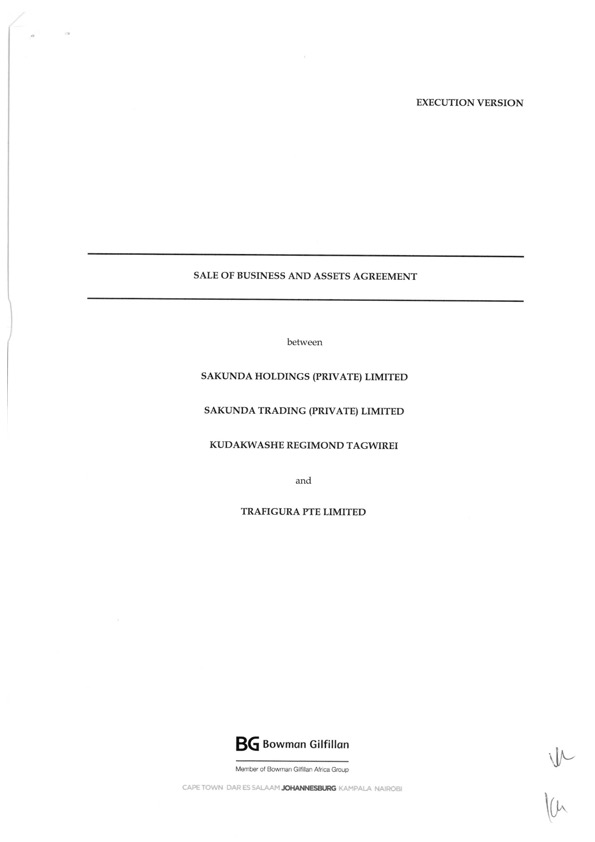
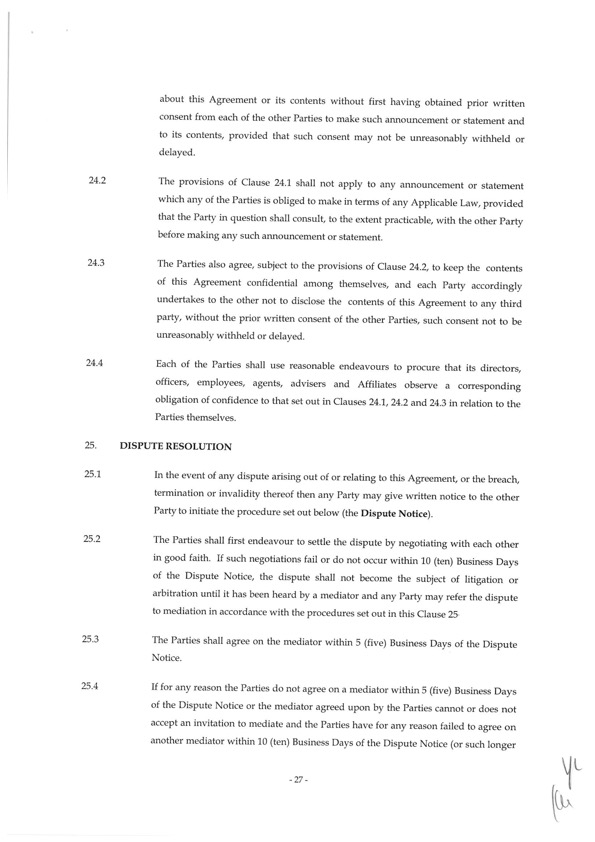
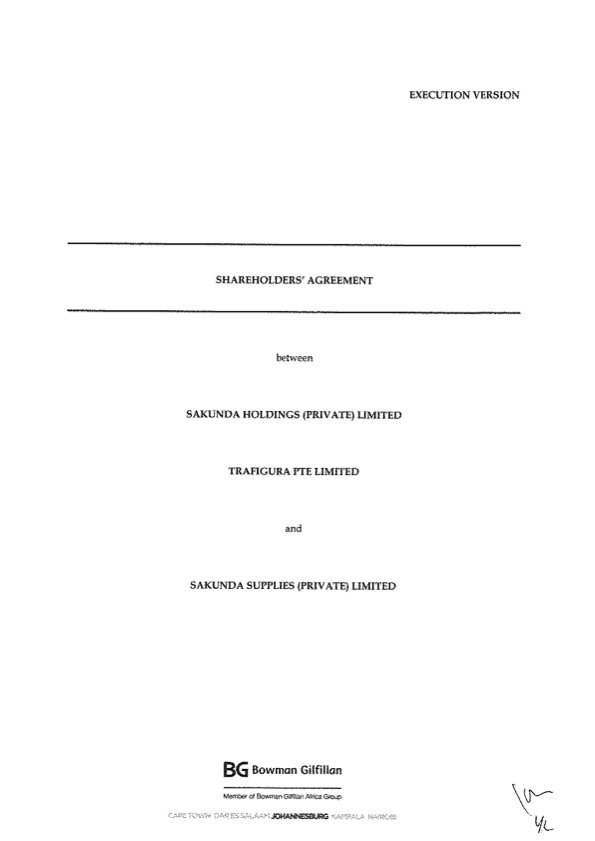
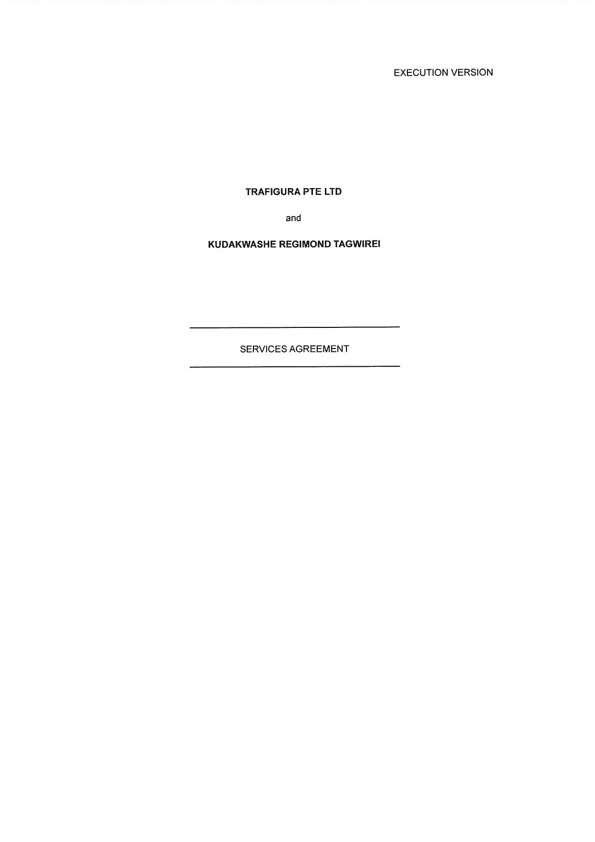
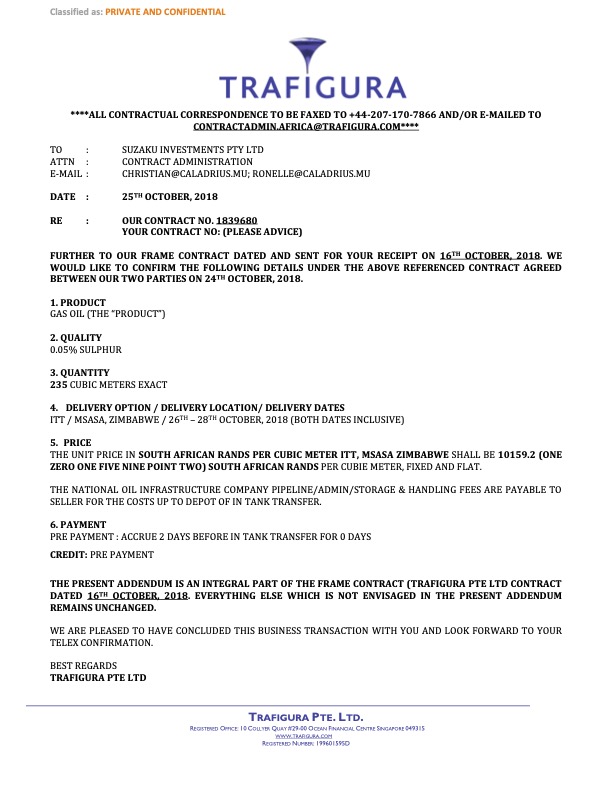
In return, a service agreement between Trafigura and Tagwirei, ratified in 2014, granted a $12 million signing bonus and a further $12 million for Tagwirei when NOIC provided access to their pipeline and the project launched.
On paper, Tagwirei’s role in the new company was to provide his “significant market experience, network and contact base.” But an insider said Trafigura was simply paying for Tagwirei’s access to powerful figures in Zimbabwe.
“Trafigura provided everything: the capital, the fuel, the expertise,” said former Trafigura Zimbabwe director Christopher Fourie.
“Sakunda [Holdings] – by which I mean just a few front guys under Tagwirei – were the political connections to the reserve bank, the president. Their aim was to keep profits low in Zimbabwean operations and pay Tagwirei offshore,” said Fourie, who later served as CEO and shareholder of another one of Tagwirei’s companies.
“A Captive Market”
In November 2013, just a few months after the joint venture was formed, Trafigura made the first in a series of cash advances to the Zimbabwean government’s pipeline operator.
Confidential documents show that, over the course of the next six years, Trafigura and its joint venture came up with at least $1 billion in prepayments to NOIC.
In exchange, Trafigura Zimbabwe got priority access to Zimbabwe’s key oil pipeline. In 2018 the joint venture paid what appears to be a favorable price of $1.24 per barrel moved. It costs about $2.19 a barrel to transport oil through the Feruka pipeline from Beira in Mozambique to Harare. Meanwhile Trafigura Zimbabwe earned up to 40 percent gross profits for the supply of oil — all with sparse competition and all negotiated opaquely.
A December 2018 amendment of the joint venture agreement sets out credit facilities made available by Trafigura’s head office to the government of Zimbabwe, including loans of $50 million and $13.6 million.
The Reserve Bank of Zimbabwe guaranteed NOIC’s repayments of the advances, which were to be made in foreign currency. The interest if NOIC were to fail to pay its monthly obligation was a hefty 16 percent, which was to be compounded against the full outstanding sum, repayable immediately and in full. Zimbabwe is chronically short of foreign currency and heavily in debt, and has struggled to repay its obligations.
“If these terms are correct, 16 percent is a very high interest rate,” said Natasha White, an oil researcher at U.K.-based advocacy group Global Witness. “High interest rates are usually conditions to buffer the risk of non-payment (and are where the traders make their money on these deals).”
Commodity trader prepayments to states and state-backed entities often feature deals based on political connections and lack a tender process, according to White. “This raises serious red flags regarding the government’s decision to enter into them,” she said.
The 2018 agreement specified a base monthly repayment of $5 million until April 2019 and $3.2 million from May 2019 until the total sum of $63.6 million was fully repaid. By the time of the December 2018 agreement, NOIC had received almost $400 million in advances from Trafigura itself, while the total advances of both Trafigura and the joint venture were close to $1 billion, according to an internal Trafigura Zimbabwe document.
Zimbabwe’s central bank governor John Mangudya denied this to OCCRP, claiming the “outstanding balance by 2018 was only $130 million.” He declined to provide term sheets, stating that loan agreements are confidential.
Internal Trafigura Zimbabwe communications underscored the value of the company’s pre-financing of Mnangagwa’s government: “[Trafigura Zimbabwe] expects to maintain its pre-financing arrangements going forward,” as these allowed for the company to maintain “its role as a price leader,” as well as its dominant market position.
According to an internal 2018 company report, Trafigura Zimbabwe was supplying up to 60 percent of Zimbabwe’s required monthly fuel imports. Tendai Biti, the former finance minister and head of the parliamentary committee investigating Tagwirei’s company Sakunda, said the joint venture has supplied more than 80 percent of the country’s total fuel supply. Trafigura Zimbabwe internally labeled their deal as a “captive market.”
In an email to OCCRP, Trafigura said “we do not recognise” OCCRP’s figures for the prepayments, but would not discuss pre-financing arrangements.
“From time to time, Trafigura has agreed credit terms related to the supply of fuel to customers in Zimbabwe and subject to usual commercial terms and confidentiality,” a Trafigura spokesperson said.
Mangudya told OCCRP, “All strategic imports are a priority to the Bank,” and that Trafigura provided “a $390 million fuel line of credit.”
A Potent Partnership
At the heart of the deal was the relationship between Trafigura and Tagwirei, who was paid over $100 million in fees through January 2018, with more than 40 percent of that money going directly to his Swiss and other offshore accounts, according to documents seen by OCCRP.
Tagwirei’s Fees
Tagwirei was paid over $100 million in fees by Trafigura, OCCRP has found. More than 40 percent of that money went directly to his Swiss and other offshore accounts.
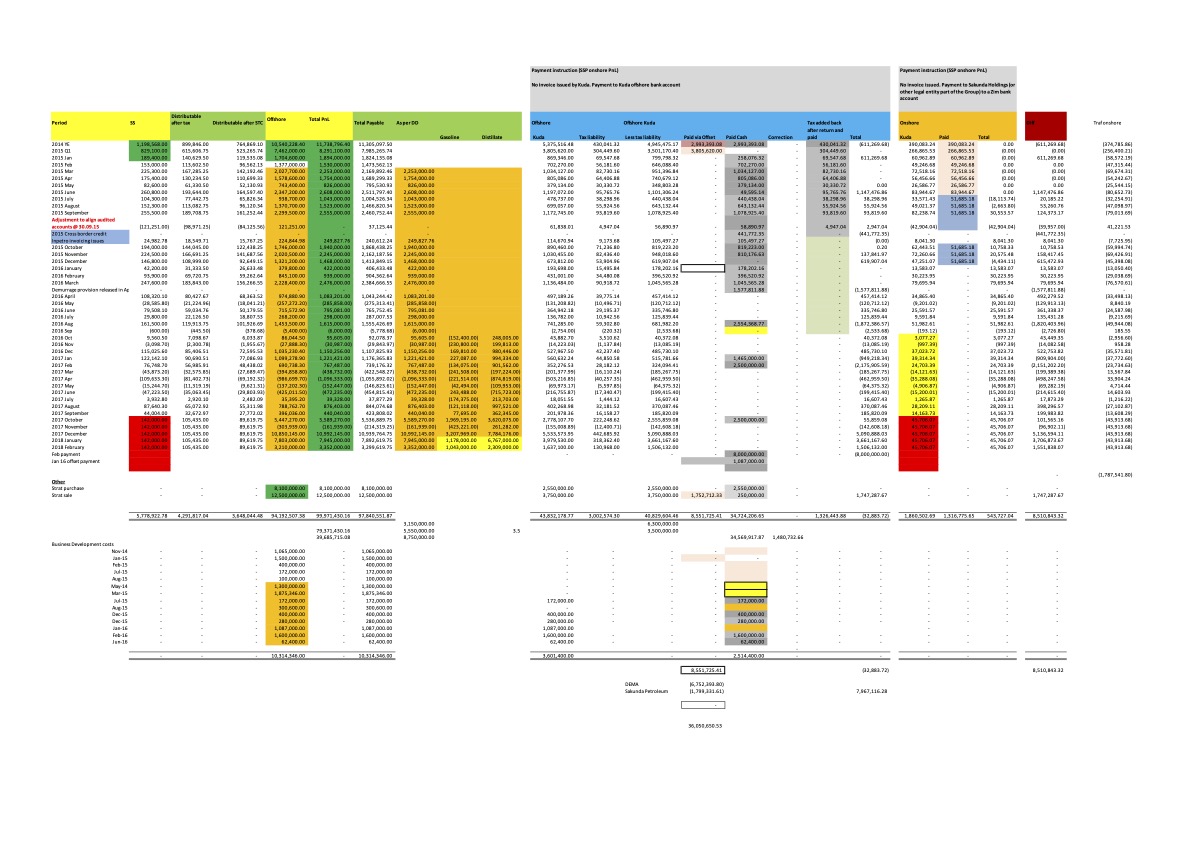
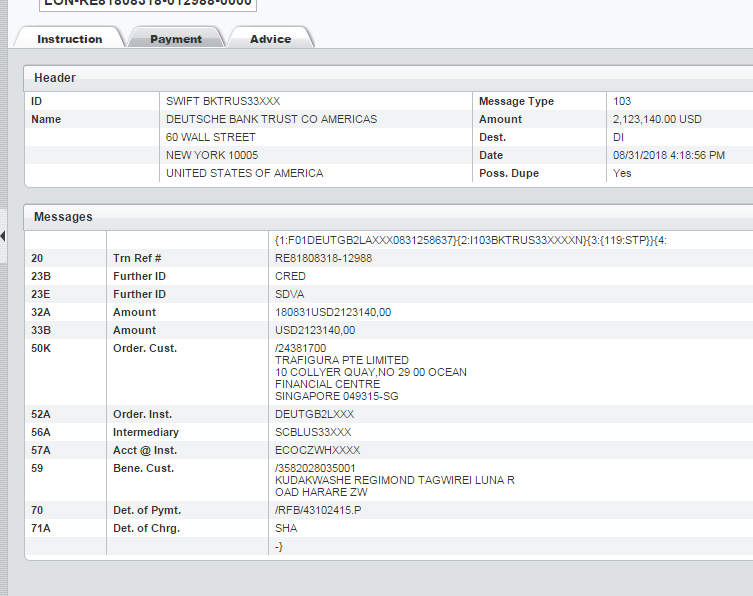
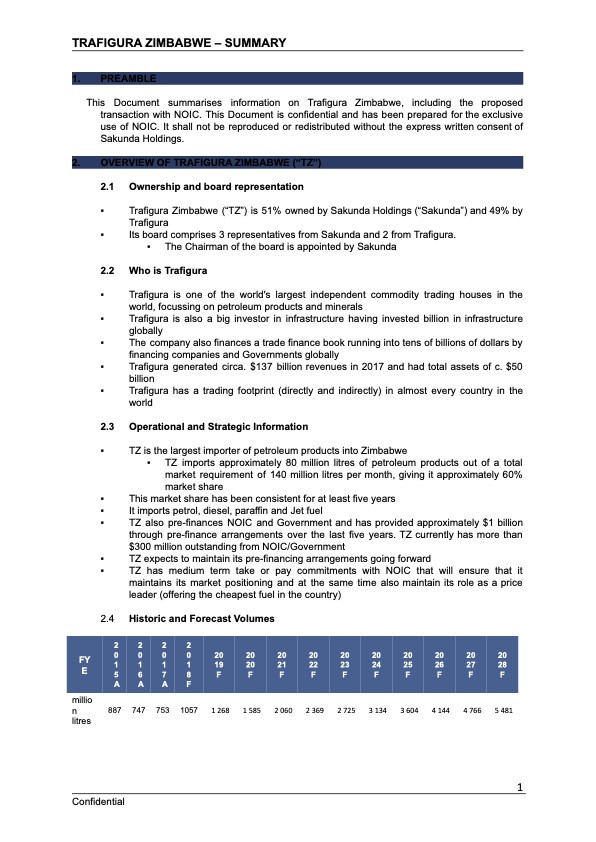
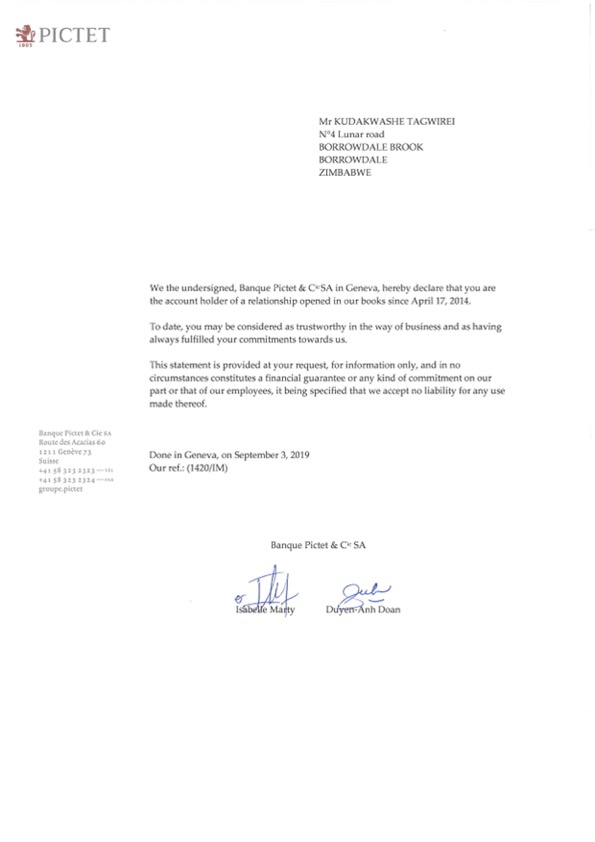
The payments made to Tagwirei raise a red flag, according to Global Witness’s Natasha White.
“Red flags include the personal involvement of politically exposed individuals in such deals. It would be extremely concerning if payments have been made into a personal account of Tagwirei by Trafigura, whether or not he was sanctioned at the time,” she said.
Reporters obtained internal emails discussing Tagwirei’s finances, which referenced an offshore account in Switzerland. He opened an account at Geneva-based Pictet Bank on April 17, 2014, about the same time he began to earn fees from his deal with Trafigura, according to a document signed by a bank official.
In addition to fees, Tagwirei received funds from Trafigura for “pipeline gain,” mineral deals, and project management, according to invoices obtained by OCCRP. He was paid in U.S. dollars through Trafigura accounts, including some held at New York-based Deutsche Bank Trust Company Americas.
Notably, Tagiwirei’s name may have been concealed from some payments based on invoices seen by OCCRP, due to correspondent banking practices. For transfers in the U.S., the recipient can be identified via the bank names and numbers of African banks where Tagwirei had an account, such as Zimbabwe’s Ecobank. These banks have correspondent links to U.S. banks to allow them to access U.S. dollars; Zimbabwe’s Ecobank, for example, is hosted by New York-based Standard Chartered Bank. By naming only the bank account number on the transfer rather than the account holder, Tagwirei’s name could have been omitted from compliance checks in the U.S.
Trafigura publicly cut ties with Tagwirei just before the businessman was sanctioned by the U.S. in August 2020. The U.S. said the move was made in response to the $3 billion allegedly misappropriated by his companies in connection with a flagship farming program called Command Agriculture.
🔗Command Agriculture and T-Bills
Following years of hyperinflation and land grabs under Mugabe, then a devastating 2016 drought, Zimbabwe introduced the Command Agriculture program to bolster food security. The Central Bank funded the program using Treasury Bills — a form of short-dated, government-backed security — that ended up creating billions of dollars of debt and draining foreign exchange reserves. Taxpayers footed the bill.
In December 2019, Trafigura announced it had bought out Sakunda’s 51 percent stake in Trafigura Zimbabwe without disclosing the amount it had paid for the shares. “This will bring improved clarity on Trafigura’s activities in the country,” the company said in a statement. Documents obtained by OCCRP indicate Tagwirei’s shares were worth “449 million” as of November 2018, but the currency is unclear.
Doing Business From Mauritius
Even before Tagwirei and Sakunda were sanctioned by the U.S. Treasury in 2020, plans were being laid to establish a new, clean corporate structure that could be used to continue the deal using the Mauritius-based Sotic International and other associated offshore companies.
Trafigura immediately started to do business with this new Mauritius network.
Excel sheets and invoices obtained by OCCRP show Trafigura contracted with and sold fuel to Sotic and its subsidiaries from 2018 onwards.
A 2019 deal between Sotic and NOIC signed by Mangudya, the central bank governor, as a guarantor for NOIC, allowed Sotic to effectively maintain control of the NOIC pipeline. The deal ensured the pipeline existed “solely at Sotic’s benefit” according to an internal email, and included “first rank priority pumping for all Sotic product.”
The Mauritius Connection
From 2018 onwards, Trafigura continued to do business with Tagwirei through Sotic International Ltd., a new company he had set up in Mauritius. Several shell companies associated with Sotic were fronted by former Trafigura employees.
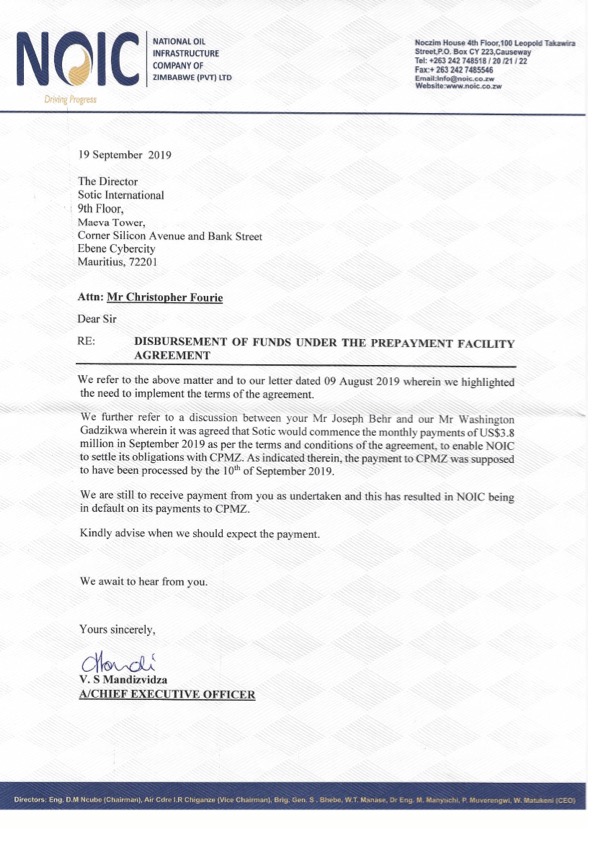
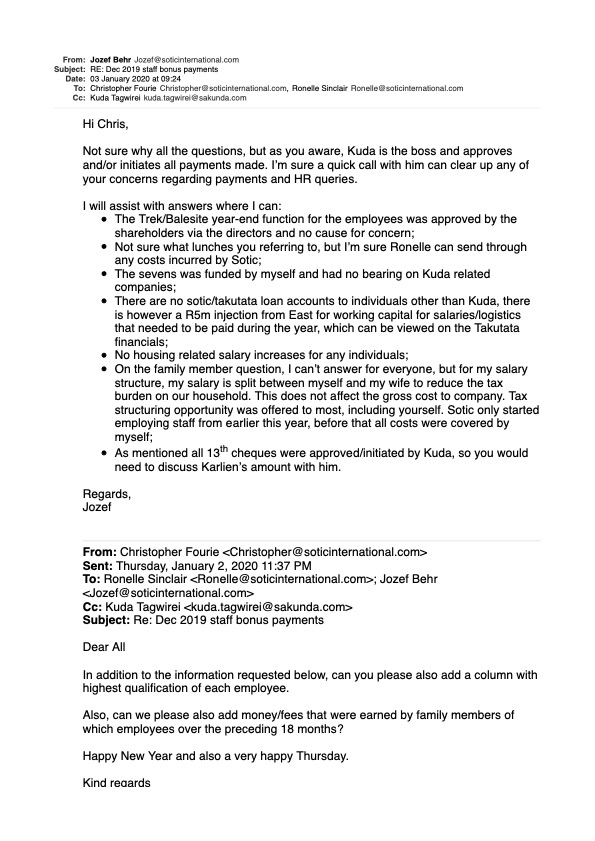
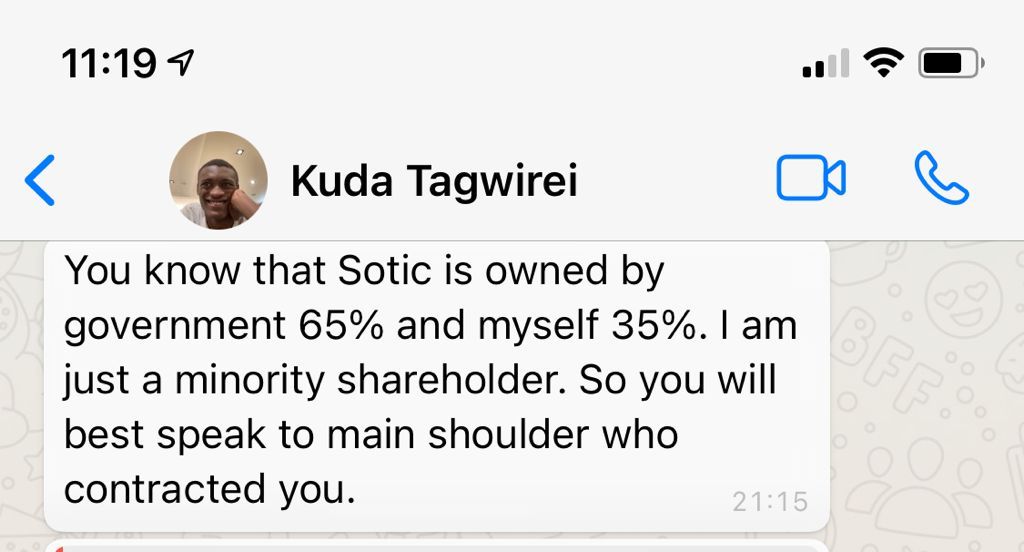
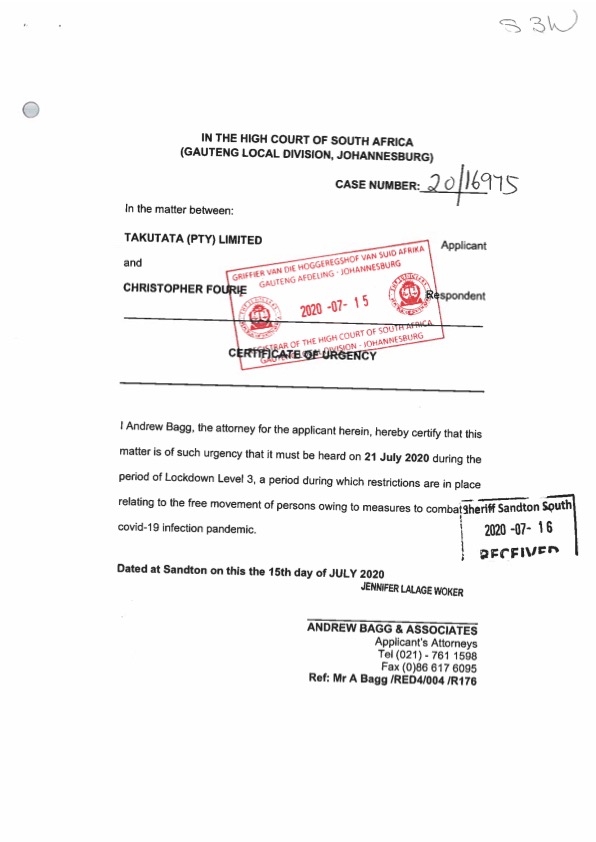
In an email to OCCRP, Mangudya claimed the pre-financing arrangement “was never consummated” and therefore there was “nothing to publicise.” However, a document obtained by OCCRP dated September 2019 shows NOIC asking for the payment from Sotic it was owed based on the deal’s “prepayment facility” guaranteed by the central bank.
Business as Usual
The fuel deal with Tagwirei’s new Sotic company is similar to the arrangement that existed with Sakunda until it was sanctioned by the U.S.
Prepayments worth $1.2 billion were again offered to NOIC, according to a contract between Sotic and Zimbabwe’s central bank governor on behalf of NOIC. The agreement allowed Sotic to effectively maintain control of the NOIC pipeline, ensuring it got “first rank priority pumping,” according to the term sheet.
Under the Sotic-drafted contract terms, Sotic would source foreign exchange of up to $600 million on behalf of the Reserve Bank, with the rest in RTGS currency, a local pseudo-currency that doesn’t trade on international markets and whose exchange rate is artificially set by the government. Minutes of a meeting reveal that $100 to $200 million would be provided by traders like Trafigura over a period of eight years after the initial drawdown.
The guarantor of the agreement was the Reserve Bank, with bank governor Mangudya listed as the contact person.
However, Sotic appeared to shortchange the country once more. By July 3, 2019, a payment of just 814 million RTGS (worth about $2.2 million) had been deposited by Tagwirei’s team into the Reserve Bank’s account — far short of the huge sums of foreign exchange required by the contract. Almost immediately, Sotic began to default on monthly payments. However, the documents show none of this seems to have affected Sotic’s priority status.
🔗Sky-High Margins
A leaked internal Sotic email provides an insight into how the group of companies artificially inflated the prices of their products.
The email shows that a Sotic subsidiary sold a petroleum-based product to Sotic at $590 per metric tonne. Sotic then proposed to sell the product for $820 per metric tonne to Tagwirei’s Zimbabwean structure, Fossil. The January 2019 email notes: “got these numbers from [Tagwirei]…Think the plan is that Fossil sells to the end consumer at $877…”
By moving the product between companies in their group and increasing the price each time, Tagwirei’s network stood to make an estimated $460,000 extra profit on this deal alone.
Friends in High Places
While Tagwirei is often credited as being the mastermind behind his business successes, correspondence between him and others shows he might be a proxy for political interests.
Tagwirei’s businesses appeared to involve President Mnangagwa, or “HE” (His Excellency), as he was sometimes referred to and other government officials. In private WhatsApp correspondence obtained by OCCRP, Tagwirei claimed to beneficially own 35 percent of Sotic, saying the “government” owned the rest.
In email correspondence obtained by OCCRP about payment for a mining deal, Tagwirei seemed to reference Mnangagwa by saying, “HE wants that money to be paid after I show him the directors, owners of Sotic-Documents.”
By the time Sotic was formed, Tagwirei and his associates understood he was a liability and avoided formally linking the businessman to the new network. Documents show Tagwirei’s company formation agent and administrator of his Mauritius companies described how he had to use his pre-existing relationship with the CEO of Mauritian bank AfrAsia to open an account there for Sotic because of the negative press Tagwirei was getting. The new bank accounts allowed Sotic to hold accounts denominated in U.S. dollars and euros, despite the compliance risks associated with Tagwirei. These accounts allowed the company access to US banks through AfrAsia’s correspondent banking.
As the businesses were shuffled, so were the key figures in the network. Tagwirei took a back seat, at least nominally, and proxies including at least one political figure and several South Africans took up key roles.
As revealed by U.S. anti-corruption group The Sentry, and confirmed in documents and emails from May 2019, Zimbabwe’s central bank governor John Mangudya is named as the legal protector of Lighthouse Trust, a co-owner of Sotic at the time. Lighthouse Trust, in turn, was owned by four beneficiary trusts: Amphion (15%), Norfolk (15%), Leonidas (35%), and Alcaston (35%). Mangudya, once again, served as the protector in all of them.
A legal protector is a person appointed to direct or restrain trustees in relation to their administration of a trust. Neither the government nor the Central Bank have disclosed a business interest in Sotic, so it is not clear why Mangudya would play such a role in Sotic-related trusts.
In an email to OCCRP, Mangudya claimed he was not part of the trust structures and was not aware his name had been listed as their legal protector. When asked directly if Tagwirei fraudulently used his name, he declined to respond further. Sotic’s former CEO confirmed to OCCRP that the instruction to include Mangudya came from Tagwirei.
Ronelle Sinclair and Jozef Behr – Sotic’s former head of finance and Trafigura’s former head of Africa trading – were both trustees in the trusts that held part of Sotic.
Former Sotic CEO and shareholder Christopher Fourie said it was clear that Tagwirei retained control over Sotic. Whenever he raised legal or financial concerns, employees invoked Tagwirei.
In an email to OCCRP, former Sotic CEO David Brown claimed he had no involvement in transactions prior to June 2020 and therefore could not comment on irregularities pointed out by reporters. “These matters are largely driven by a disgruntled employee who is part of a history that might well have taken place,” he added.
He also denied knowledge of Tagwirei’s ownership of Sotic group assets prior to that date but added, “Mr Tagwirei is a very prominent business man in Zimbabwe and …an official advisor to Government and being as Government are shareholders in the mining assets, it is hard not to occasionally cross paths.”
OCCRP provided Brown with evidence, including several hundred emails beginning in 2019, and information on major mining deals. Despite stating in an email to other Sotic staff that “[Tagwirei] has asked that I take a greater role,” Brown denied this to OCCRP, saying, “I was not brought in by Mr Tagwirei.”
A representative for Sincler and Behr said they had resigned all duties and were off the board of Sotic International as of June 2020. “Since then, there has been no further association with the business of Kudukwashe Tagwerei.” She also confirmed Behr and Sinclair work for Suzako. A since-removed website for Suzako listed Behr, Sinclair, and Weber as the company’s executive team as recently as May this year.
Yet Suzako was part of Sotic’s network, according to court records. When Sotic CEO at the time David Brown filed an application in South Africa’s high court to stop his predecessor Fourie from talking to the press, he included the full structure of Sotic’s corporate network. The application was quickly withdrawn but not before the companies were disclosed. Sukako was clearly listed as a Sotic company.
While everyone seems to be working hard to separate themselves from Tagwirei and his companies, Fourie is a rare voice who acknowledges crimes were committed and has reported them to the South African reserve bank and others.
“They did not care about the law, about financial crimes being committed. All they cared about was seeing that [Tagwirei’s] orders were executed,” Fourie told OCCRP. “I spoke out against them and I am paying the price.”
–-occrp
